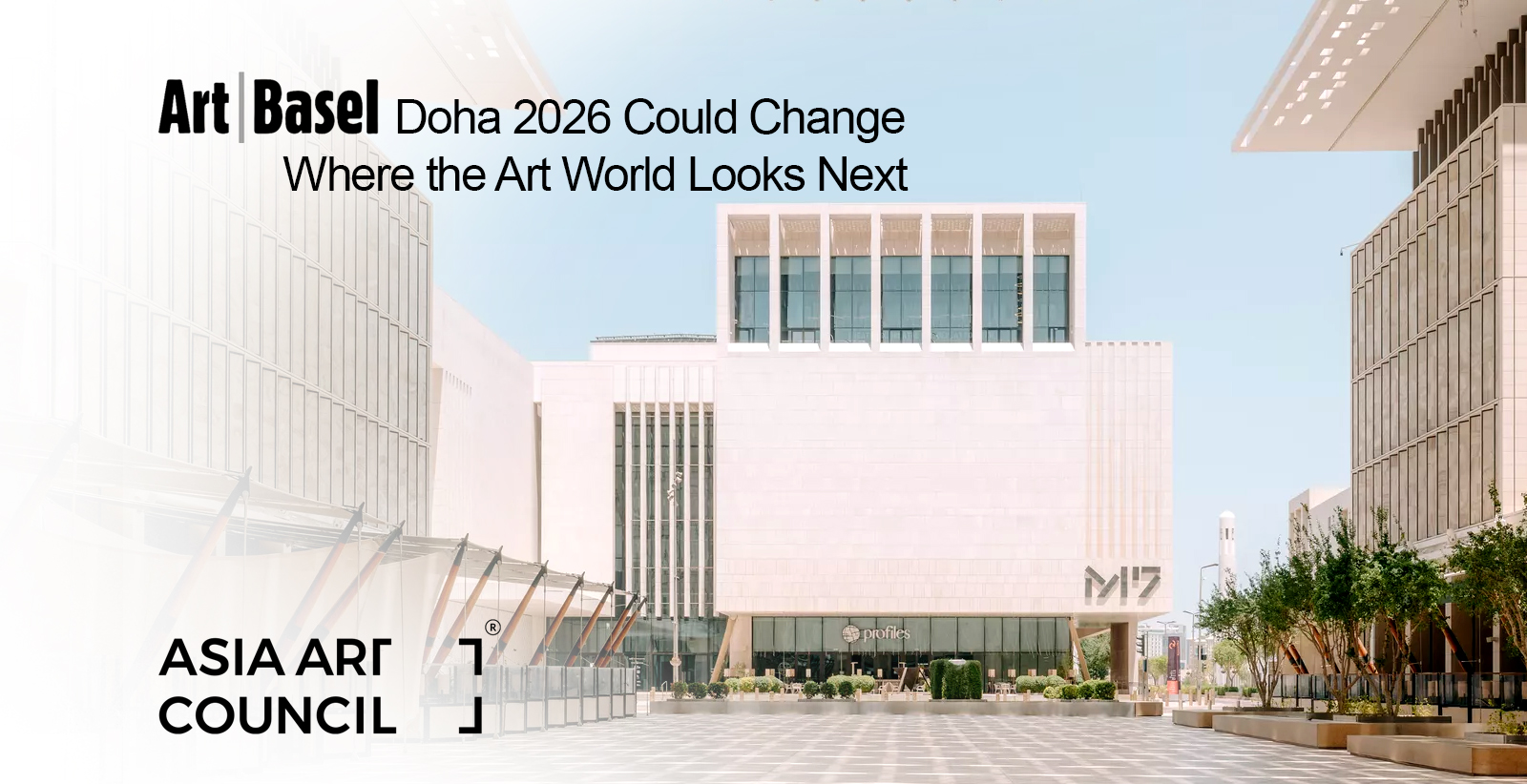Art Basel Lands in Qatar
A Turning Point for the Middle East & South Asia Art Scene
By [Asia Art Council Editorial Desk]
For decades, Art Basel has been the gold standard for art fairs. Its name alone can shift an artist’s market trajectory, catapult a gallery into the global spotlight, and recalibrate collector interest. Now, for the first time, this powerhouse of the art world is coming to the Middle East. In February 2026, Doha will host Art Basel Qatar at M7 in the creative heart of Msheireb, with an initial selection of 50 of the world’s leading galleries. This isn’t just another art event—it’s a calculated cultural leap that could change how the global art map is drawn.
Why This Is More Than Just a Fair
Qatar isn’t a newcomer to cultural ambition. Under the visionary leadership of Sheikha Al-Mayassa bint Hamad bin Khalifa Al-Thani, the country has built an art ecosystem that includes the Museum of Islamic Art, Mathaf: Arab Museum of Modern Art, and the soon-to-open Art Mill Museum. Hosting Art Basel is the next logical step—and it’s not just about prestige.
It’s about creating a hub where Middle Eastern and South Asian voices sit alongside global heavyweights.
It’s about giving our artists and galleries a platform that’s impossible to ignore.
What It Means for the Middle East & South Asia
1. Global Spotlight on Regional Talent
Artists from India, Pakistan, Bangladesh, Sri Lanka, Iran, the Gulf, and beyond will now have a stage where top-tier curators, critics, and collectors are actively looking for fresh narratives. No more being the “exotic” side note—this is about being part of the main story.
2. Collector Development at a New Scale
For serious collectors in the region, Art Basel Qatar removes a long-standing barrier: accessibility. Instead of traveling to Basel, Miami, or Hong Kong, they can engage directly with leading galleries and see the world’s best art without leaving the region. This could cultivate a new generation of high-net-worth collectors across the Middle East and South Asia.
3. Institutional and Market Growth
Fairs like this create ripple effects. Galleries invest in better representation, governments support creative economies, and art schools expand programs to meet demand. Expect artist residencies, collaborative projects, and cross-border exhibitions to multiply.
Strategic Timing in a Shifting Art Economy
Global art sales dipped in 2024, with the Middle East still representing less than 1% of the market share. Art Basel’s entry is no coincidence—it’s a strategic move to energize a market that has cultural capital in abundance but untapped buying power.
For the Art community, this is a call to action: to position ourselves at the intersection of this growth. Whether you’re a gallerist seeking representation, a collector looking for emerging talent, or an artist ready for an international audience, Doha 2026 is a milestone you should be planning for now.
From Regional Stage to Global Conversation
Art Basel Qatar is not coming to “add” the Middle East and South Asia to the art conversation, it’s coming to reframe the conversation entirely. By embedding itself in Doha’s cultural fabric and leveraging Qatar’s deep investment in soft power, this fair has the potential to:
Redefine global collecting routes
Shift curatorial focus toward MENASA narratives
Create a sustained cultural bridge between Asia, the Gulf, and Europe
What’s Next for Us
We see Art Basel Qatar not just as an event, but as a catalyst for a decade-long transformation in our region’s art economy.
If you’ve ever wished for a platform that brings our stories, talent, and market potential to the very center of the art world’s attention, February 2026 might just be the moment.
Mark your calendars. Prepare your portfolios. And let’s make sure our region doesn’t just participate—let’s lead.


